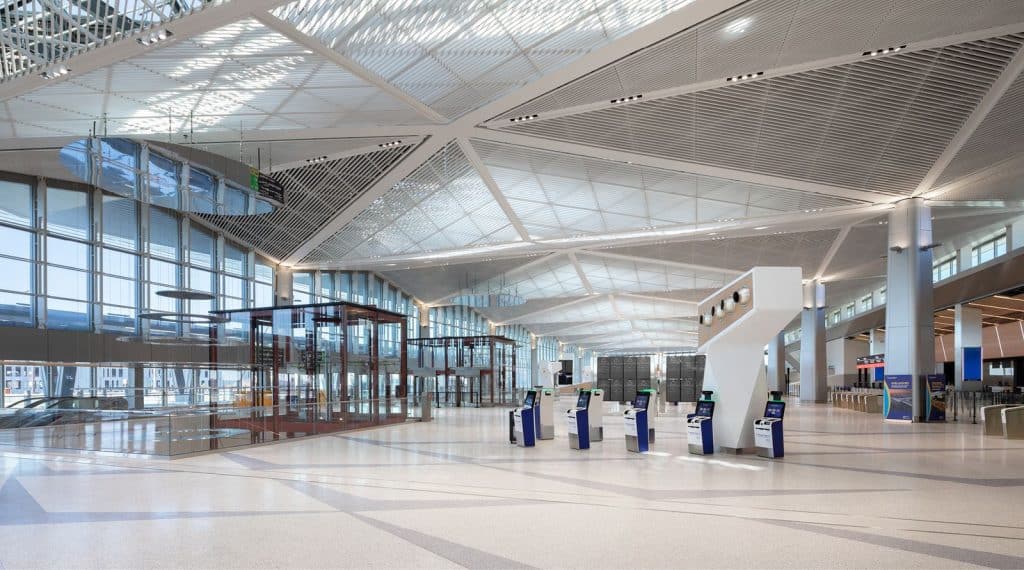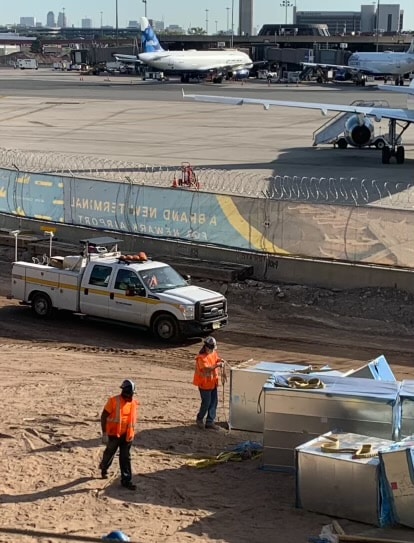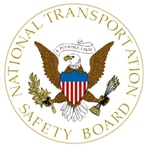Local 25 sheet metal workers in northern New Jersey recently completed work on the brand-new Terminal A at Newark Liberty Airport. The huge project, funded by a $3 billion investment from the Port Authority of New Jersey/New York, included 33 airline gates and eight bridges, as well as restaurants, bars and retail.
“Local 25 covered all sheet metal and HVAC work in the terminal: restaurants, bars, stores, gates, airways to planes, exhausts and kitchen equipment to all bars and grills,” said Local 25 Organizer Gregory Conte. “Local 25 had over 90 members on the job at any given point in the project.”

At more than one million square feet, the new Terminal A was the largest design and build project in New Jersey. The terminal was designed and built by Tutor Perini and Parson in a joint venture development; signatory contractors WDF and Halo Sheet Metal began work in September 2021 and finished the project – on time – on January 24, 2023.
“We are proud of everyone who worked on this massive new terminal,” said Local 25 President and Business Manager Joseph Demark, Jr. and area Business Agent/Financial Secretary-Treasurer Calvin Brooks. “Next up will be Terminal B and then C. Great job!”




 Based on the NTSB’s investigation of two recent airline flights that landed at wrong airports because of confusion with other near-by airports, the agency today issued two recommendations to the FAA intended to help avoid those situations. The recommendations ask the FAA to clarify air traffic controller landing clearances when multiple airports are in the vicinity and to modify air traffic control software which warns air traffic controllers when aircraft have descended below a minimum safe altitude.
Based on the NTSB’s investigation of two recent airline flights that landed at wrong airports because of confusion with other near-by airports, the agency today issued two recommendations to the FAA intended to help avoid those situations. The recommendations ask the FAA to clarify air traffic controller landing clearances when multiple airports are in the vicinity and to modify air traffic control software which warns air traffic controllers when aircraft have descended below a minimum safe altitude.